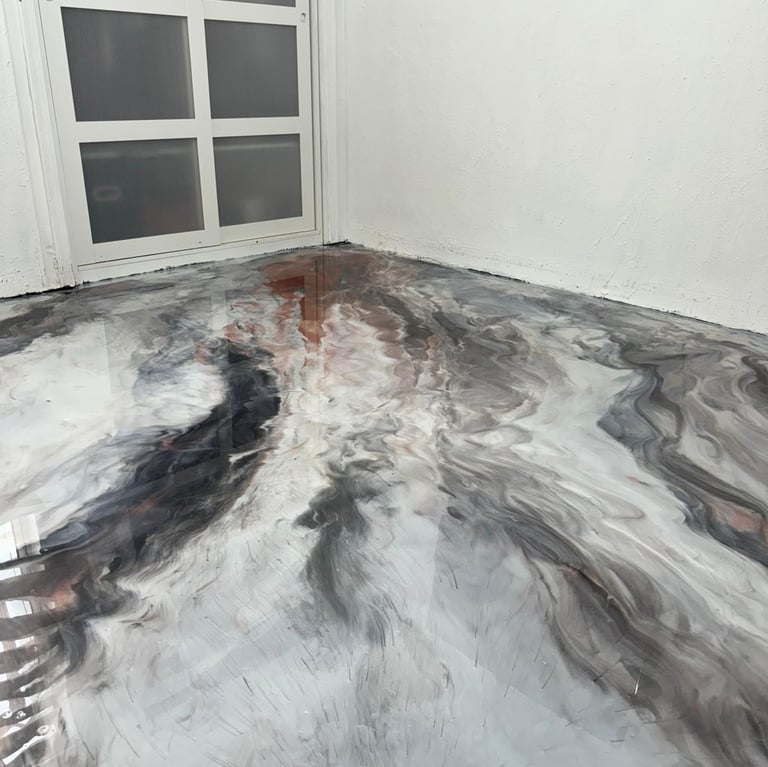Care and Maintenance of Epoxy Floors for Optimum Durability
PISOS EPOXY


Epoxy floors, whether flake or metallic, offer an excellent combination of durability and aesthetics. However, to ensure that they continue to look pristine and function properly after installation, it is essential to follow certain precautions and carry out proper maintenance. In this article, we will explore tips and best practices for caring for and maintaining epoxy floors in the short and long term.
Initial care after installation
Once the installation of your epoxy floor has been completed, it is crucial to pay attention to the following recommendations to ensure a proper curing process and preserve the quality of the coating:
Curing Time: Curing time may vary depending on the type of epoxy coating used and local environmental conditions. It is essential to follow the manufacturer's instructions for recommended curing time before allowing access to the newly coated area. Generally, it is advisable to wait at least 24-72 hours for optimal curing.
Avoid Excessive Traffic: During the curing period and the first few weeks after application, excessive traffic in the coated area should be avoided. To prevent damage to the epoxy coating, it is advisable to use signs and barriers to prevent people from entering the space.
Protection Against Liquids and Chemicals: Keep your epoxy floor away from contact with liquids and chemicals that can damage the coating. If any liquid is spilled on the epoxy floor, clean it immediately to prevent permanent damage. Also, be sure to use rugs or mats in areas where frequent spills may occur.
Long-term maintenance for continued durability
Once the curing process is complete, it is essential to implement a regular maintenance program to ensure that your epoxy floor maintains its beauty and functionality over time. Here are some key tips for ongoing maintenance:
Regular Cleaning: Regular cleaning is essential to prevent the accumulation of dirt, dust and particles that can scratch the surface of the epoxy floor. It is recommended to use a vacuum cleaner with a soft brush or a microfiber mop to keep floors clean. Avoid using hard brushes or brooms that may damage the coating.
Periodic Inspection: Perform periodic visual inspections of your epoxy floor for any signs of wear, damage or deterioration. These inspections will help identify problems early, allowing them to be addressed before they become more serious problems.
Damage Repair: If you detect any damage or defect in the epoxy floor, it is essential to act immediately to prevent it from spreading and causing additional damage. Repairs may include filling cracks or crevices, applying a new coat of epoxy to damaged areas, or, in extreme cases, replacing part or all of the floor. Working closely with an experienced professional can be crucial to ensuring repairs are done properly.
Benefits of maintaining your epoxy floor
Proper maintenance of your epoxy floor not only ensures its durability, but also carries a number of significant benefits:
Maintaining Appearance: A well-maintained epoxy floor will retain its aesthetic appearance, which is especially important in commercial or residential settings where aesthetics are a key factor.
Continued Safety: By keeping the floor in good condition, the risk of slips and falls due to damage or wear is reduced.
Long-Term Cost Savings: Preventive maintenance and timely repairs can be cheaper than completely replacing a damaged floor.
In short, caring for and maintaining an epoxy floor is essential to prolong its life and enjoy the benefits that this type of coating offers. With attention to detail and a proper maintenance schedule, your epoxy floor can maintain its beauty and functionality for many years.
LOCATION
El paso, Texas, EEUU.


Copyright © 2024 Capepoxy
Designed by @encripto.sd
Privacy Policy
Terms and conditions
